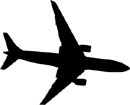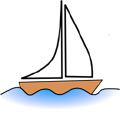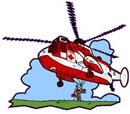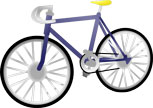 Vehicle Facts for Kids
Vehicle Facts for Kids
Check out our fun vehicle facts for kids featuring a wide range of interesting transport related trivia and information.
Read about different types of boats, how helicopters work, what submarines are used for, how fast modern trains can move, what keeps hot air balloons in the air, the history of cars, how bicycles transfer energy, the different parts that make up an airplane and much more.
 1.Airplane Facts for Kids
1.Airplane Facts for Kids
Check out our fun airplane facts for kids and enjoy learning about different aircraft.
Find information on commercial planes, drones, wings, engines, the history of flight and much more. Read on for a wide range of interesting trivia and information related to airplanes.
- Airplanes are fixed-wing aircraft that are propelled through the air by engines.
- They are used for transportation, recreation, research and military purposes.
- Engines provide the thrust needed to move a plane forward, overcoming drag and allowing the wings to create lift.
- Aircraft wings feature a shape called an airfoil which is designed to create lift as the plane moves through the air.
- The long, thin body of an aircraft is typically called the fuselage.
- Pilots usually control the plane from a cockpit located at the front of the fuselage.
- Some aircraft (usually military or experimental) are capable of supersonic flight (breaking the sound barrier) by traveling at speeds faster than sound (1235kph, 768mph).
- There have only been two commercial aircraft capable of supersonic transport, the most well known of these was the Concorde which flew between major cities such as London, New York and Paris until 2003.
- It took Concorde just three and a half hours to travel from New York to Paris while it took other commercial aircraft around eight hours.
- Unmanned aircraft controlled remotely or by computers are known as drones.
- American aviation pioneers Orville and Wilbur Wright (The Wright Brothers), are believed to be have created the first successful airplane.
- Learn more about the principles of flying with our flight facts for kids.
 2.Boat Facts for Kids
2.Boat Facts for Kids
Check out our fun boat facts for kids and enjoy learning about various ships and watercraft.
Find information on sailboats, luxury yachts, the America’s Cup, nautical terms and much more. Read on for a wide range of interesting trivia and information related to boats.
- Large watercraft are generally called ships.
- Smaller watercraft are generally called boats.
- They are designed to float on water, whether it be in lakes, rivers or seas.
- Boats and ships serve a variety of purposes including transport, recreation, fishing, sporting competition and military operations.
- Some boats are human powered, including kayaks, canoes and gondolas.
- Sailboats are propelled by wind and sails.
- The tall upright post on a sailboat is called a mast.
- Motorboats are propelled by engines.
- Cargo ships carry goods between ports around the world.
- The hull is the main body of a boat or ship.
- Starboard and port are nautical terms which describe the right (starboard) and left (port) sides when facing the the front (bow) of a ship or boat.
- The rear part of a ship or boat is called the stern.
- The America’s Cup is awarded to the winner of a series of races between sailing yachts. Originally awarded in 1851, it is the oldest international sporting trophy in the world.
- Some luxury yachts (also called superyachts or megayachts) are over 70 metres (230 feet) in length with the longest examples reaching over 150 metres (492 feet).
- Learn about submarines and the Titanic.
 3.Helicopter Facts for Kids
3.Helicopter Facts for Kids
Check out our fun helicopter facts for kids and enjoy learning about what they do and how they work. Find information on their variety of uses, how rotors work, hovering, fastest speeds, their limitations and much more. Read on for a wide range of interesting trivia and information related to helicopters.
- Helicopters are agile aircraft capable of taking off and landing vertically, hovering and flying in different directions.
- The lift and thrust of helicopters are provided by spinning rotors, usually featuring two or more blades.
- Helicopters typically have one main rotor and one smaller rotor in the tail which counters the torque effect, stopping the helicopter from spinning in the opposite direction.
- Some helicopters have two horizontal rotors which spin in opposite directions, allowing the helicopter to lift heavier objects.
- Helicopters have advantages over fixed-wing aircraft that allow them to access hard to reach areas, particularly useful in rescue situations.
- As well as search and rescue, helicopters are useful for tourism, medical transport, fighting fires, aerial photography, military activity and more.
- Helicopters have a number of limitations. They can be noisy, vibrate a lot and aren't as fast as fixed-wing aircraft.
- Vertical flight has existed in some form as far back as 400 BC when children in China played with flying toys made from bamboo which created lift when spun.
- Around 1480 Leonardo da Vinci designed a machine resembling a helicopter which can be described as an ‘aerial screw’.
- The first working helicopter is believed to have been the Focke-Wulf Fw 61, first flown in 1936.
- The fastest speed recorded by a helicopter is around 400 kph (248 mph).
- The longest distance traveled in a helicopter without landing is 3562 km (2213 miles).
- Helicopters can be used to fight fires by carrying tanks or helibuckets filled with water.
- Hovering can be the most difficult skill when flying a helicopter. Constant control is required to offset gusty air created by the helicopter.
- Small quadcopters are popular among researchers, the military and amateur enthusiasts due to their ease of control and affordable construction.
- Helicopters are sometimes called choppers.
 4.Submarine Facts For Kids
4.Submarine Facts For Kids
Check out our fun submarine facts for kids and enjoy learning about their history. Find information on what submarines are used for, how long they can remain submerged, how many crew they typically have, when they were first developed and much more. Read on for a wide range of interesting trivia and information related to submarines
- Submarines are a special type of watercraft that can operate underwater.
- They are typically large vessels with a high number of crew. Nuclear submarines may have a crew of over 100.
- Submarines are used by the military as part of navy forces, protecting aircraft carriers, performing reconnaissance and carrying out other tasks.
- Submarines are also used in other areas such as marine research, undersea exploration and salvage missions.
- Some submarines can remain submerged for months at a time.
- Submarines typically feature a raised tower which holds radar equipment, the periscope and other systems.
- Submarines use ballast tanks to hold water, allowing them to submerge when necessary.
- Early submersibles were developed in the 1600s before the first known military submarine was built in 1775. Named the ‘Turtle’, it held one person and was controlled underwater independently, the first verified submarine capable of doing so.
- Both sides of the American Civil War built and used submarines.
- The first submarine not propelled by human power was the French vessel named ‘Plongeur’. Launched in 1863, it used compressed air for propulsion.
- Developed in the 1800s, torpedoes became an important part of submarine warfare.
- French writer Jules Verne published ‘20,000 Leagues under the Sea’ in 1870, a popular science fiction novel that boosted interest in submarine design.
- Submarine development and use continued through World War I and II, with German U-boats particularly effective in blocking supply lines to the UK.
- Launched in 1954, the first nuclear powered submarine was the USS Nautilus. Nuclear power allowed submarines to operate at high speeds while staying underwater longer than other forms of propulsion such as diesel-electric.
- Both the United States and Soviet Union maintained significant submarine fleets during the cold war.
 5.Bicycle Facts for Kids
5.Bicycle Facts for Kids
Check out our fun bicycle facts for kids and enjoy learning about bikes and cycling history. Find information on different types of bicycles, brakes, pedals, tires, recreational cycling, professional cycling and much more. Read on for a wide range of interesting trivia and information related to bicycles.
- Bicycles are human powered vehicles, typically featuring pedals, a seat, two wheels and a frame.
- There are over one billion bicycles found throughout the world.
- Bicycles are used for transport, recreation, competitive racing, courier delivery and a range of other tasks.
- Competitive cycling includes track cycling inside velodromes, time trials, mountain biking, BMX and longer events such as the Tour de France.
- The Tour de France was first held in 1903 and his since become the most famous cycling race in the world. Held over three weeks, the annually changing route goes through the Pyrenees and Alps before finishing in Paris.
- Tandem bicycles are made to be ridden by two or more people.
- Although unicycles (one wheel) and tricycles (three wheels) don’t have two wheels, they are sometimes still referred to as ‘bikes’.
- The energy required to cycle at low to medium speeds is roughly the same as the energy required to walk.
- Bicycles typically use a chain to transmit power to the rear wheel.
- To get efficient use of their pedaling, cyclists use a high gear when going downhill, a medium gear on flat surfaces and a low gear when going uphill.
- Different brake types include rim brakes, internal hub brakes and disc brakes.
- Some bicycles feature suspension. This is especially common in mountain bikes where they are used to help deal with the vibration caused by uneven surfaces.
- Road bikes typically have thinner tires inflated to higher pressures than those found on mountain bikes, taking advantage of the smoother surfaces that roads generally provide.
- Before the word ‘bicycle’ become popular (coming from the French word ‘bicyclette’), bikes were typically called ‘velocipedes’.
- Two wheeled transportation developed in the 1800s, from pushed powered bikes through to mechanical crank drives with pedals.
- You may have heard of the Penny-farthing, an early type of bicycle that featured a front wheel significantly larger than the rear. The name comes from the old British Penny and Farthing coins which represent the large and small wheels.
- The pneumatic tire came along in the later years of the 19th century along with the rear freewheel and coaster brakes.
- Cycling became increasing popular in the early stages of the 20th century as cycling clubs and races caught on.
 6.Car Facts for Kids
6.Car Facts for Kids
Check out our fun car facts for kids and enjoy learning about the automobile industry. Find information on the history of cars, engines, production lines, fuel types, modern cars, future trends and much more. Read on for a wide range of interesting trivia and information related to cars.
- The car, automobile, motor car or autocar usually has four-wheels and is a vehicle that uses its own motor engine system to transport passengers over purposely built roads.
- In 1769 Nicolas-Joseph Cugnot of France arguably invented the first full-scale, self propelled mechanical vehicle or automobile. It was a steam-powered tricycle.
- In 1807 Nicéphore Niépce and his brother Claude are believed to have built the world's first internal combustion engine. They called it a Pyréolophore. However, they chose to install it in a boat not a car. That same year a Swiss inventor François Isaac de Rivaz finished his own internal combustion engine and used it to create the world's first internal combustion engine vehicle.
- The Benz Patent-Motorwagen is believed to be the first modern automobile. It was built in 1886 by German inventor Carl Benz.
- In August 1888, Carl Benz's wife, Bertha Benz, became the first person to drive a car over a long distance. Without telling her husband she drove one of their Benz Patent-Motorwagens along with her two eldest sons from a town called Mannheim in southern Germany to Pforzheim. Automobile trips before this were usually short drives, she wanted to prove the automobile they had invented was a useful contraption, that the general public could use.
- Bertha Benz's road trip was a pioneering drive and a key event in the technical development of the car. Covering 106 km (66 miles) each way she did the round trip in two days, solving numerous problems on the way. When the brakes needed repairing she invented brake lining. She used a hatpin to clean a blocked fuel pipe and insulated a wire with a garter. She located fuel at the city pharmacy in Wiesloch (hailed as the first fuel station in the world) and on her return home made other suggestions, such as the need of another gear for climbing hills.
- In 1892, Rudolf Diesel a German engineer invented a "New Rational Combustion Engine" which lead him to building the first Diesel Engine in 1897.
- As automobiles became more popular a need arose to manufacture affordable cars on a large-scale basis. Ransom Olds in 1902, debuted a production-line manufacturing system at his Oldsmobile factory in Michigan, USA.
- Henry Ford's Model T car, introduced in 1908, is often regarded as the most famous of all early automobiles. It was the first car to become publically affordable, especially after Ford massively improved the production-line manufacturing system.
- In 1914, Ford created a production-line system that focused on synchronization, precision, and specialization. Ford's cars came off the line much faster than previous methods (from 12.5 man-hours down to just 1.5), which increased productivity yet used less manpower. By assigning each worker a specified area rather than allowing them to roam about, injuries were dramatically reduced.
- Ford could afford to pay workers more as the number of workers needed decreased. Combined with the high efficiency output a term called "Fordism" was surmised. It lead to most major manufacturing industries adopting the method for various products which contributed to the economic rise of the United States.
- Today, various body styles for the car exist such as the sedan/saloon, hatchback, station wagon/estate and van.
- Petrol (gasoline) and diesel are still used to fuel the internal combustion engine today. However, both of these fuels cause air pollution and contribute to climate change. With rapidly increasing oil prices and concerns about the environmental impacts there is a lot of work underway to produce viable future alternative power systems for cars. Hybrid vehicles, plug-in electric vehicles, hydrogen vehicles and vehicles using alternative fuels such as natural gas are gaining popularity.
- Fully autonomous vehicles (driverless cars) currently exist in prototype (Google has developed a driverless car). These cars are expected to be available commercially around the year 2020. Autonomous cars could help to reduce the amount of vehicles needed on the road and dramatically increase safety.
 7.Hot Air Balloon Facts for Kids
7.Hot Air Balloon Facts for Kids
Check out our hot air balloon facts for kids and enjoy learning about how they work.
Find information on how high they can fly, what kind of fuel they burn, where popular balloon festivals are held and much more. Read on for a wide range of fun trivia and information related to hot air balloons.
- The first human carrying flight technology was the hot air balloon.
- While unmanned balloons have been around in some form for thousands of years, the first untethered flight with people on board was in 1782.
- The large balloon on top is called an ‘envelope’. It holds hot air created by a heat source known as a burner.
- The burner creates an open flame by burning a mix of liquid propane and air.
- Hot air balloons are buoyant because the hot air inside the envelope has a lower density than the colder air outside.
- Passengers typically stand in a wicker basket beneath the envelope.
- While most envelopes have a standard balloon shape, others are designed to look like animals, cartoon characters and other fun objects.
- The top of the balloon usually has a vent which allows the pilot to control the speed of ascent/descent (along with the burner).
- Hot air balloons can fly to amazing heights, the world record is over 21,000 metres! (68,900 feet). It’s tough to breathe up there so oxygen is needed from around 5,000 metres (16,400 feet).
- The temperature inside a hot air balloon is usually kept below 120 degrees Celsius (248 Fahrenheit).
- A typical envelope is made from nylon with a melting point around 230 degrees Celsius (446 Fahrenheit).
- Hot air balloon flights and festivals are popular in various destinations around the world. Well known locations include Cappadocia (Turkey), Albuquerque (New Mexico, USA), Luxor (Egypt) and the Serengeti (Tanzania).
 8.Train Facts for Kids
8.Train Facts for Kids
Check out our fun train facts for kids and enjoy learning about their history and how they work. Find information on steam trains, cargo trains, locomotives, high speed railways, new technologies and much more. Read on for a wide range of interesting trivia and information related to trains.
- Trains are built to transport passengers or cargo along rail tracks.
- There are all kinds of different trains that are built for a range of purposes and environments.
- Trains can be powered by a variety of energy sources including steam, diesel andelectricity.
- The use of steam locomotives developed through the 19th century before diesel and electric locomotives began to replace them in the 20th century.
- Cargo trains are typically powered by a locomotive which pulls from the front.
- Some trains have a second locomotive which helps by pushing from the back.
- Passenger trains often feature self-propelled carriages (multiple units) that can be joined with other units. Trains such as these are more energy efficient but may require more maintenance than a single locomotive vehicle.
- Some high speed rail services can reach speeds over 300 kph (186 mph).
- In operation since 1964, Japan’s Shinkansen (bullet train) is a well known example of a high speed passenger rail system.
- Opened in 1994, the Channel Tunnel carries passengers between the UK andFrance on a high speed railway.
- Technologies such as magnetic levitation may provide faster, more efficient train travel in the future. Magnetic levitation propels trains forward using magnets, keeping the vehicle levitated but close to the track.
- Monorails feature a single rail and are often elevated above ground.
- Funicular (or venicular) railways feature two cars/trams attached by cables that counterbalance each other as they move up and down a steep slope.
- There are many train enthusiasts around the world interested in everything from rail history to famous train journeys, model trains, railway photography and other hobbies related to railways.
- You may have heard of Thomas the Tank Engine, a popular character from British television and literature. Thomas is a small steam locomotive who starred in the children’s television series with a variety of other railway friends.

No comments:
Post a Comment